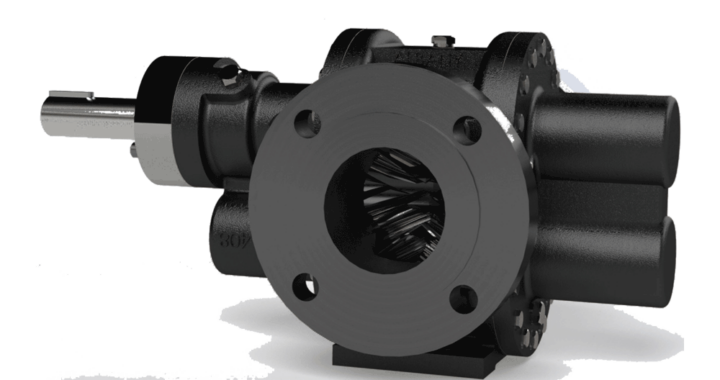Business
Precision in Motion: How Rotary Gear Pumps Reliably Power Diverse Industrial Processes in Modern Manufacturing

Why Rotary Gear Pumps Matter in Industry
In today’s industrial landscape, the seamless movement of fluids is not just an operational necessity but a strategic advantage. Rotary gear pumps, thanks to their efficiency, reliability, and adaptability, enable industries to maintain consistent flow rates under a myriad of conditions. Whether the task is moving highly viscous oils or delicate syrups, these pumps operate quietly in the background, ensuring every step in the process runs smoothly. For plant managers and engineers, such reliability means less downtime and reduced risk of costly process interruptions, especially in environments where time translates to money.
The role of proper equipment selection can’t be overstated when it comes to industrial pumps. Consultation resources, such as this website, offer insights into the available pump configurations and options designed to address specific industry challenges. High performance and tailored design combine to keep operations on track, prevent fluid degradation, and maintain employee safety in regulated facilities. The investment in the right rotary gear pump is ultimately an investment in the long-term efficiency and resilience of the plant as a whole.
Key Features and Principles of Operation
The working principle of a rotary gear pump is elegantly simple and wonderfully effective. Each pump features two or more gears that interlock and rotate within a housing. As the gears turn, fluid is drawn into the cavities between the gear teeth and carried around the outside to the discharge point, yielding a steady, non-fluctuating flow. This mechanism virtually eliminates pulsation, making gear pumps ideal for sensitive processes where flow disruption can jeopardize product quality or equipment safety.
Among the notable features are self-priming capability, allowing pumps to initiate flow even when the line isn’t fully primed, and flexible mounting options for retrofitting into existing systems. Additionally, the robust nature of these pumps enables them to handle both thin liquids, such as solvents, and thick substances, including adhesives and polymers. Technological advancements, such as specialized gear coatings and advanced sealing solutions, have also increased reliability while reducing operational noise and the potential for leaks.
Industrial Sectors Benefiting Most
Rotary gear pumps are versatile and widely used in various industries, including oil and gas, chemical production, food and beverage, and pharmaceuticals. They transport dense, abrasive materials, ensure uninterrupted flow, and maintain product quality. In fueling stations, refineries, and lubrication systems, they are crucial for safety and efficiency. In chemical production plants, they are essential for accurately dosing or blending reactive substances. In the food and beverage sector, they transport high-value materials, including chocolate, molasses, and dairy products, while maintaining strict hygiene standards and ensuring product quality. These pumps are recommended for mission-critical applications where product integrity is crucial.
Common Fluids and Applications
Rotary gear pumps have developed a reputation for handling a remarkable range of fluids. Their adaptability is especially relevant in industries where precise fluid control impacts overall productivity and costs. From lubricants used in heavy manufacturing equipment to chemicals and polymers critical in plastics manufacturing, these pumps provide the versatility necessary to address demanding workloads. In the specialty food market, rotary gear pumps ensure consistent handling of syrups, oils, and other viscous or temperature-sensitive ingredients. The pumps maintain a steady flow without churning or aerating, thereby preserving flavor and consistency.
- Lubricating oils and greases: Vital for extending the lifespan of industrial machinery.
- Viscous chemicals and resins: Favored by chemical processors for accuracy in delivery and mixing.
- Syrups and chocolate: Utilized in food plants for precise metering without compromising hygiene.
- Solvents and fuels: Chosen for their safe, closed-system transfer, minimizing exposure risks.
- Polymer melts and adhesives: Indispensable to plastics and packaging manufacturers.
Business
Strategies for Cultivating a Highly Ethical Business Culture

If there’s one thing today’s customers, employees, and partners can all agree on, it’s this: ethics matter a lot. People want to buy from companies they trust, work for leaders they respect, and partner with businesses that keep their word. Gen Z and Millennials, specifically, prefer to purchase from ethical brands.
Fortunately, ethical excellence is entirely achievable if you bake integrity into the very foundation of how your organization thinks, communicates, and operates. Below are a few practical ways your business can nurture a highly ethical culture.
#1 Put Ethical Leadership Front and Center
Ethical culture always starts at the top. You, the leader, are the clearest mirror for your entire team. Employees watch what you do much more closely than what you say. Your actions must consistently match your stated values.
Be honest and open with your team about the challenges you face. Clearly define all roles and responsibilities to avoid unnecessary confusion. When you are transparent, your employees will gain deeper trust in you. There will be no need for them to second-guess your meaning.
This type of honest leadership is essential for attracting talent now. Younger professionals, especially Generation Z, value ethics in their leaders. Since Gen Z will make up 25% of the workforce soon, this focus on values is a strong retention strategy.
Accountability is much more than just taking responsibility for positive results. Ethical leaders stand behind their work and do not try to place blame on others when problems occur. When your team sees you own a mistake, they learn that it is safe for them to own their mistakes, too. This builds a positive environment.
#2 Always Prioritize Quality
Commitment to quality is one of the most meaningful expressions of ethics in business. You can claim integrity all day long, but if your products or services fall short, those words lose all meaning.
Chasing speed or profit at the expense of moral standards constitutes a failure that harms customers and rapidly erodes a company’s most valuable asset: its good reputation. Shortcuts, ironically, end up being the longest route to success.
The controversy surrounding the defective Paragard intrauterine device (IUD) shows this clearly. Redesigning the device would likely have been costly, but it would have protected patients. Yet, the manufacturer prioritized profits over safety.
The result? Thousands of women who got it implanted suffered from excessive bleeding, perforation, organ trauma, and infections like pelvic inflammatory disease, notes TorHoerman Law.
No wonder they filed the Paragard lawsuit against Teva Pharmaceuticals and Cooper Surgical. The Paragard IUD lawsuit settlement amounts could range between $10,000 and $400,000 per person.
It’s clear: you must prioritize quality from design to delivery. Choose the right materials, double-check the data, review the work one more time, and refuse to cut corners even when deadlines are tight or budgets are stretched.
#3 Promote Diverse Voices and Inclusive Decision-Making
If you want to reduce the risk of making a bad ethical choice, you must include diverse perspectives in your decision-making.
When everyone thinks the same way, you end up with groupthink or a dangerous echo chamber. That stifles dissent and prevents people from challenging questionable ethical choices.
Bringing in people with different life experiences, viewpoints, and cultural backgrounds changes everything. It naturally creates space for healthy debate, thoughtful questions, and alternative ideas that help teams recognize ethical pitfalls before they become real problems.
Instead of one narrow lens, you get a wider, clearer view of the impact your decisions may have on customers, employees, and the community.
Research actually shows that companies with racially diverse employees are more ethical. This is because they value different people and perspectives more than homogeneous companies.
As a leader, you must empower new voices. One smart technique is to push decision-making down to the people closest to the actual work. This instantly broadens the input you receive.
Trust is the most vital currency when inviting diverse leaders to the table. New voices may fear that they won’t be taken seriously. Invite them consciously and value their unique perspectives to make sure they feel safe speaking up.
Making Ethics Your Competitive Edge
A highly ethical business culture is built day by day, decision by decision. It thrives when leaders model excellence, when quality is prioritized, when diverse voices shape decisions, and when transparency is woven into daily operations.
At the end of the day, ethics shape your reputation, your relationships, and your long-term success. They determine how people remember you and how proud your team feels to show up every day.
So start where you are. Lead with heart, model the values you want to see, and build systems that support honesty, fairness, and respect. Bit by bit, you’ll create a culture that not only performs well but also does good, and that is the kind of business the world needs more of.
Business
make1m.com Millionaire Life – The Digital Blueprint to Building Wealth Online

The concept of the make1m.com millionaire life is more than just a dream of luxury cars and beach villas. It’s a new era of online entrepreneurship where digital innovation meets financial intelligence. In today’s fast-changing digital economy, platforms like make1m.com are helping ordinary people transform their financial lives by offering knowledge, community support, and modern wealth-building strategies.
The make1m.com millionaire life symbolizes a mindset — one that values consistent effort, digital literacy, and smart investments over get-rich-quick schemes. Whether you’re interested in crypto trading, eCommerce, or affiliate marketing, this platform acts as a stepping stone toward long-term success.
Understanding the make1m.com Millionaire Life Philosophy
The foundation of the make1m.com millionaire life lies in three key principles: financial education, digital income diversification, and mindset transformation.
| Principle | Description | Importance |
|---|---|---|
| Financial Education | Learning how money works in the digital era. | Builds strong financial literacy and confidence. |
| Digital Diversification | Investing in multiple online income streams. | Reduces risk and increases long-term stability. |
| Mindset Transformation | Shifting from employee to entrepreneurial thinking. | Helps create consistent, scalable results. |
These principles reflect the core of make1m.com millionaire life: empowering users to become independent wealth builders rather than passive earners.
How make1m.com Millionaire Life Helps Build Digital Income
The rise of digital wealth has opened multiple income pathways. make1m.com millionaire life introduces proven online models for achieving scalable profits. Some of the most effective methods include:
-
Affiliate Marketing – Earning commissions by promoting trusted brands.
-
E-commerce & Dropshipping – Building online stores without holding inventory.
-
Cryptocurrency & NFTs – Leveraging blockchain assets for exponential growth.
-
Freelancing & Remote Work – Selling digital skills globally.
Each of these income streams complements the make1m.com millionaire life goal — creating financial freedom that isn’t limited by geography or time.
The Digital Blueprint of make1m.com Millionaire Life
At its core provides a step-by-step approach to wealth creation:
| Step | Strategy | Outcome |
|---|---|---|
| 1 | Identify a profitable niche | Focused business direction |
| 2 | Build an online presence | Brand credibility |
| 3 | Automate marketing & sales | Time freedom |
| 4 | Scale through reinvestment | Long-term growth |
This structured plan ensures that every user, regardless of experience, can follow a clear roadmap toward financial independence.
Mindset Shifts Behind the make1m.com Millionaire Life
Becoming part of the requires changing how you think about success. Traditional employment rewards time, but digital wealth rewards value and scalability. This means learning to build systems that work for you, even when you’re not actively working.
| Traditional Mindset | Millionaire Life Mindset |
|---|---|
| Earn by working hours | Earn by creating value |
| Depend on salary | Build independent assets |
| Save for retirement | Create passive income streams |
By developing a growth-oriented mindset, individuals can unlock unlimited earning potential.
The Role of Technology in make1m.com Millionaire Life
Technology is at the center of the experience. With AI tools, automation software, and blockchain technologies, wealth creation has become more accessible than ever before.
-
AI-Powered Analytics: Helps identify profitable trends and customer behaviors.
-
Social Media Automation: Builds audiences while reducing manual work.
-
Blockchain Integration: Ensures transparency and decentralized opportunities.
These tools help streamline online business operations, allowing users to focus on creativity and innovation rather than routine tasks.
Building a Personal Brand through make1m.com Millionaire Life
Another essential part of the is personal branding. In today’s digital landscape, trust and authenticity drive income. The platform teaches individuals how to:
-
Establish authority through content creation.
-
Grow social influence via consistent engagement.
-
Monetize personal expertise through digital products or mentorships.
This focus on personal branding ensures long-term stability, even as digital markets evolve.
Comparing Traditional Wealth vs. make1m.com Millionaire Life
| Aspect | Traditional Path | make1m.com Millionaire Life |
|---|---|---|
| Time Freedom | Limited by job hours | Unlimited, flexible |
| Income Source | Single (salary) | Multiple digital streams |
| Risk | Job dependency | Diversified investments |
| Growth Rate | Slow and linear | Exponential potential |
The redefines what financial success means in the digital world. It’s not about chasing trends but mastering online systems that generate recurring value.
The Community Behind make1m.com Millionaire Life
Beyond tools and guides fosters a global community of like-minded entrepreneurs. This network offers mentorship, collaboration, and accountability — three elements crucial for long-term success.
Participants exchange insights, celebrate milestones, and help newcomers navigate challenges. This sense of connection makes the wealth journey less isolating and more empowering.
Financial Discipline in make1m.com Millionaire Life
Financial growth requires discipline. The emphasizes budgeting, reinvestment, and consistent goal tracking.
| Financial Habit | Description | Benefit |
|---|---|---|
| Reinvestment | Putting profits back into growth | Long-term scalability |
| Diversification | Spreading income across niches | Risk reduction |
| Consistent Learning | Staying updated with trends | Sustained competitiveness |
By following these habits, members can maintain steady progress without falling prey to volatility.
Future of Wealth: Why make1m.com Millionaire Life Matters
The life isn’t just about making money; it’s about financial evolution. As digital economies continue to expand, those who understand technology and strategy will hold the key to global opportunities.
Platforms like make1m.com serve as the bridge between traditional entrepreneurship and futuristic digital wealth systems.
Conclusion
The make1m.com millionaire life represents a modern revolution — where financial success is driven by innovation, community, and digital mastery. By embracing technology, diversifying income, and adopting a millionaire mindset, anyone can begin their journey toward sustainable wealth.
In an era defined by digital transformation, make1m.com millionaire life isn’t just a website — it’s a movement guiding a new generation toward financial independence and global opportunity.
Business
Unlocking Peak Performance for Your European Ride

Table of Contents
- Brake System Maintenance
- Regular Oil Changes
- Tire Care and Alignment
- Engine Diagnostics and Tuning
- Climate Control System Checks
- Suspension and Steering Inspections
- Electrical System Evaluation
- Factory-Scheduled Maintenance
- Conclusion
Owning a European car is a true mark of distinction, reflecting not only your appreciation for luxury but also a passion for precision engineering, technological innovation, and superior driving experiences. Models like Audi, BMW, Mercedes-Benz, and Porsche are famed for their blend of performance and craftsmanship, demanding a level of care and attention that matches their engineering pedigree. Routine maintenance is crucial for maintaining the performance, safety, and long-term value of your vehicle. By staying proactive with upkeep, you ensure that your car continues to deliver smooth acceleration, nimble handling, and dependable braking from your very first mile to your hundred-thousandth. For drivers in the Pacific Northwest, consulting local car diagnostic services Bellevue WA can help catch potential issues before they escalate into costly repairs, keeping your prized vehicle in peak condition season after season. Proper maintenance achieves far more than protecting your vehicle’s resale value, as it also gives you peace of mind and confidence every time you slide behind the wheel. Routine servicing keeps critical systems in check, reducing the risk of unexpected breakdowns and optimizing efficiency. In this comprehensive guide, you’ll discover essential maintenance tips tailored specifically for European cars, along with practical advice every owner can use to safeguard their driving investment for years to come.
Brake System Maintenance
The braking system is one of the most vital safety features on any vehicle; however, European cars often feature sophisticated, high-performance systems that incorporate electronic sensors and advanced materials. Routine inspection of brake pads, rotors, calipers, and fluid levels is crucial for both safety and vehicle longevity. Listen for squealing or grinding noises, feel for vibrations through the brake pedal or steering wheel, and be alert if your brakes feel “spongy”—these are signs of wear or air in the brake lines. Brake fluid itself absorbs moisture over time and should be changed periodically to maintain proper hydraulic pressure. Skimping on brake maintenance doesn’t just put you at risk; it can also result in severe damage to other components, leading to significantly higher repair bills. Consistent, preventative brake care guarantees short stopping distances, even in emergencies, and protects your car’s advanced safety systems.
Regular Oil Changes
Oil is the lifeblood of your engine, responsible for lubricating rapidly moving metal components, reducing friction and heat, and keeping the engine’s internals clean. When it comes to European cars, vehicles often built for refined performance and higher rev ranges, adhering to strict oil change intervals is particularly important. Most manufacturers recommend changing your oil every 5,000 to 7,500 miles; however, always refer to your owner’s manual or your technician’s advice for specific recommendations. Always use premium, manufacturer-approved synthetic oil, designed to withstand elevated temperatures and provide superior protection against wear. Neglecting oil changes can result in sludge build-up, increased friction, overheating issues, and ultimately lead to catastrophic engine damage. Be proactive: stop into a trusted service center and have your oil and filter changed well before warning lights appear. For further reading on why oil changes are so critical, check out this guide from Consumer Reports.
Tire Care and Alignment
Tires are your car’s only point of contact with the road, and ensuring they’re in optimal condition is fundamental to performance, safety, and comfort. Check your tire pressure at least once a month and before long trips, as even small imbalances can affect traction, fuel efficiency, and tread longevity. Rotate your tires according to your vehicle’s recommendations, usually every 6,000 to 8,000 miles, to ensure even tread wear and extend the life of all four tires. Don’t overlook annual alignment checks; misaligned wheels cause uneven wear, poor handling, and irritating vibrations at highway speeds. If your steering pulls to one side, it’s time for an alignment. High-quality tires and a well-maintained suspension keep your car planted on sharp corners and during sudden maneuvers.
Engine Diagnostics and Tuning
Modern European vehicles feature advanced engine management systems and a suite of electronic controls, making regular diagnostic checks crucial. In addition to routine checks, keep an eye on warning lights, unusual smoke, changes in fuel economy, or other differences in how your engine feels or sounds. Using advanced diagnostic tools, technicians can pinpoint emerging issues such as misfires, faulty sensors, or clogged injectors—often before they cause breakdowns or impact performance. Tuning, carried out by professionals using manufacturer-approved equipment, ensures your engine produces optimal horsepower, delivers smooth torque, and uses fuel efficiently—all while minimizing harmful emissions. Never ignore the check engine light; addressing these problems early can save thousands of dollars in repair costs and preserve your car’s spirited performance.
Climate Control System Checks
A comfortable cabin climate matters just as much as mechanical performance, especially for those who enjoy luxury motoring. Seasonal maintenance for your vehicle’s climate control system (which includes both air conditioning and heating) is essential not only for your comfort but also for safety reasons, such as clearing fogged windows and inhibiting bacteria or mold growth in ducts. Inspect the condition and level of coolant and refrigerant, check for leaks or cracks in hoses, and routinely test fan operation and thermostat responsiveness. Issues in the system often become apparent during extreme heat or cold, so it’s best to have things checked before the start of summer or winter. Staying ahead of these issues preserves your driving enjoyment, regardless of the weather outside.
Suspension and Steering Inspections
A sophisticated suspension and steering architecture is a hallmark of European vehicles, delivering the ride quality and handling precision that enthusiasts expect. Over the years, bushings, shocks, struts, and ball joints inevitably wear out, which can impact cornering stability, road holding, and even tire life. Listen for clunks, creaks, or knocking noises; notice any excessive body roll while cornering or if your car seems to “drift” or require frequent steering corrections. Early identification and replacement of worn components will restore the sharp dynamics your vehicle was engineered for while also contributing to tire longevity and overall safety.
Electrical System Evaluation
From adaptive LED headlights to multi-zone infotainment, European cars are loaded with advanced electrical and electronic systems. Annual checks of battery health, alternator output, and the integrity of key wiring connections help prevent unexpected breakdowns and ensure all luxury features operate properly. Be alert to flickering dashboard lights, delayed or hesitant starts, malfunctioning accessories, or warning notifications on your display; these can signal electrical issues. Timely inspection ensures that intricate driver assistance and entertainment systems continue operating flawlessly and can help you avoid much larger repair costs down the road.
Factory-Scheduled Maintenance
Manufacturer-recommended service intervals are grounded in years of rigorous engineering analysis and real-world testing. Following these schedules is the best way to ensure that all essential inspections and part replacements, such as fluid changes, filter replacements, belt replacements, and spark plug replacements, are performed on time, keeping every system functioning in harmony. Skipping scheduled maintenance doesn’t just risk expensive repairs; it can void warranties and diminish your car’s long-term value. Be diligent about consulting your owner’s manual, and maintain a record of service visits and receipts to not only protect your warranty rights but also boost the car’s resale appeal. By prioritizing these essential maintenance steps, your European vehicle will consistently deliver the dynamic performance, luxury, and reliability its engineers intended. Regular upkeep enhances every aspect of your driving experience. It provides the best protection for your significant automotive investment, ensuring your cherished car stays in exceptional condition for many miles to come.
Conclusion
Caring for a European vehicle goes beyond basic maintenance, as it’s about preserving a finely tuned blend of performance, luxury, and engineering excellence. From precision brake servicing and timely oil changes to suspension checks and advanced diagnostics, every aspect of upkeep plays a role in maintaining the car’s distinctive driving experience. By following factory-scheduled maintenance and partnering with trusted professionals, such as local car diagnostic services in Bellevue, WA, you can prevent costly repairs and ensure peak performance year-round. With consistent attention and care, your European car will continue to deliver the power, comfort, and sophistication that define its heritage, mile after mile.
-

 Technology9 months ago
Technology9 months agoRevealed: 8093642079 – Find Out Who’s Behind the Number
-

 Business5 months ago
Business5 months agoHow Horseback Adventures Foster Connection and Wellness
-

 Technology12 months ago
Technology12 months agoRaterpoint: Revolutionizing Online Content Evaluation and Feedback
-

 Technology11 months ago
Technology11 months agoDetecting AI-Generated Text: Tips and Techniques
-

 Technology11 months ago
Technology11 months agoFDXMZ24: A Comprehensive Guide
-

 Entertainment12 months ago
Entertainment12 months agoFappelo: How to Engage with This Exciting New Phenomenon
-

 Technology11 months ago
Technology11 months agoPerchance AI | Intelligent AI Solutions for Your Business
-

 Blog11 months ago
Blog11 months agoBunkralbum: What You Need to Know About This Intriguing Concept
